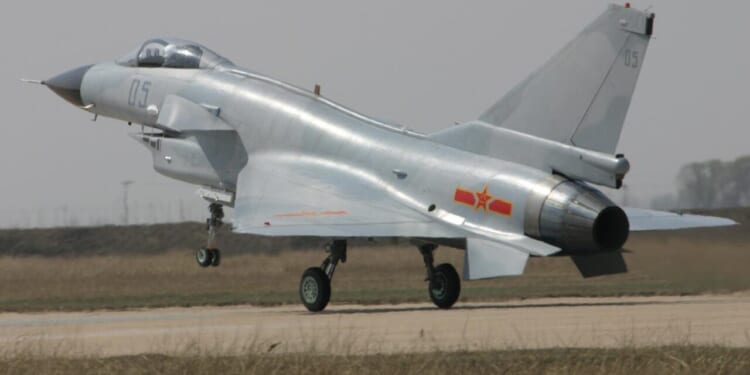Currently, China and Pakistan remain the sole operators of the J-10 aircraft platform.
Beijing’s defense industry is expanding. Earlier this month, Chinese state-run media outlets released a report touting China’s J-10 fighter jet series in an effort to garner additional foreign client buyers. Currently, China and Pakistan remain the sole operators of this aircraft platform, but reports indicate a third procurer could be in the works. Bangladesh’s leading air force officer, Air Chief Marshal Hasan Mahmood Khan, announced in September that his nation would be seeking a multirole combat aircraft in addition to other defense equipment. Considering the state of Bangladesh’s aging air arsenal, primarily comprised of Soviet-era platforms, a refresh appears to be imperative for the country’s security needs.
Introducing the J-10
The Chengdu-produced J-10 fighter series has been flying the skies for more than two decades. Born from a 1980s effort to field a more advanced aircraft, the J-10 was made to fulfill the defense needs of the People’s Liberation Army Air Force (PLAAF) during this time period. Initially, all the big-name manufacturers in China submitted proposals to be reviewed by the air force. Ultimately, however, Chengdu Aircraft Design Institute’s prototype was selected. The J-10, which mirrored elements from the Saab 27 Viggen, certainly provided greater capabilities than its predecessors for the PLAAF. With a single engine, a delta wing, and a forward canard, the Chengdu design was promising. The Russian-made AL-31 engine was originally incorporated into early prototypes, enabling a top speed of Mach 1.8 (times the speed of sound). Over the years, the WS-10B engine was incorporated as a replacement for its Russian counterpart.
Three batches of J-10 fighters have been introduced since the platform’s entry into service. From avionics improvements to armament enhancements, the newer iterations of the aircraft are widely considered to be 4.5-generation. The latest J-10 is notably equipped with sophisticated electronic warfare systems that enhance the pilot’s situational awareness and reduce the aircraft’s detectability by adversarial radar and aircraft. Initially, the Chengdu platform’s primary air-to-air contingent consisted of the medium-range PL-11 semi-active radar guided missiles and the PL-8 air-to-air missiles. Down the line, the aircraft was fitted with more formidable ordnances, including the medium-range PL-12 active-radar-guided AAMs. To further enhance the J-10’s lethality, a twin-rail launch pylon was also incorporated for the medium-range AAMs. As detailed by The War Zone, “Typical air-to-ground weapons loads include a pair of 1,102-pound LS-500J precision-guided bombs, used in conjunction with a forward-looking infrared/laser targeting pod and an electronic countermeasures (ECM) pod. Other air-to-ground munitions include the YJ-91 anti-radiation missile.”
While the J-10 has sparked Bangladesh’s interest, other options are not off the table for the Bangladesh Air Force. According to reports, Western fighters are also being considered for potential procurement. The J-10 series has also caught the attention of Indonesia. Earlier this summer, Jakarta’s deputy defense minister and retired Air Marshal Donny Ermawan Taufanto revealed that the J-10 was indeed being evaluated for potential procurement purposes. “We have had talks with China and they offered us a lot, not just J-10, but also ships, arms, frigates,” Taufanto added.
About the Author: Maya Carlin
Maya Carlin, National Security Writer with The National Interest, is an analyst with the Center for Security Policy and a former Anna Sobol Levy Fellow at IDC Herzliya in Israel. She has bylines in many publications, including The National Interest, The Jerusalem Post, and The Times of Israel. You can follow her on Twitter: @MayaCarlin.
Image: By mxiong – Flickr: J-10, CC BY 2.0, Wikimedia Commons.

















